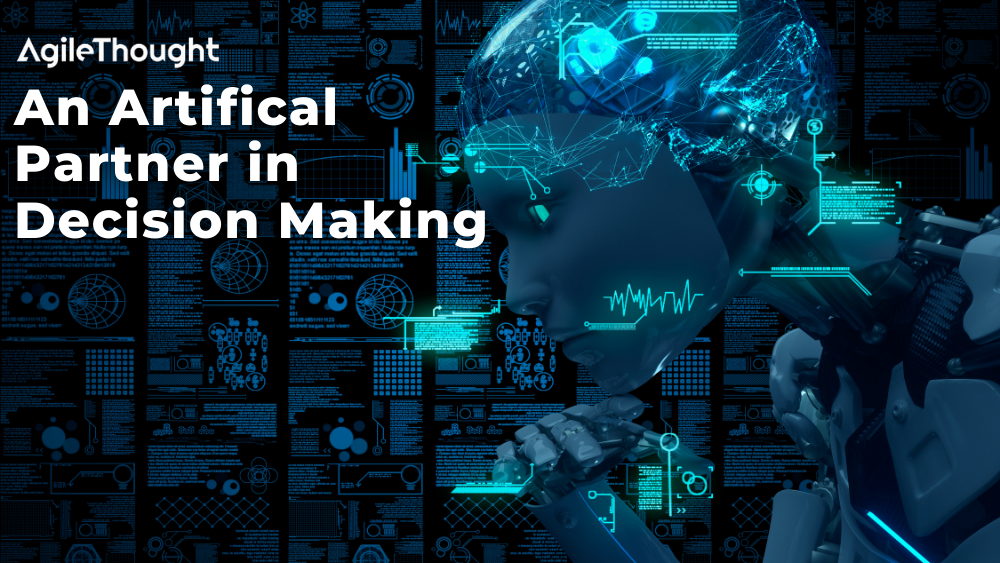6 min read
August 25, 2022


Nick Deshais
Sr. Director | Agility
9 Articles
Author's Articles

Nick Deshais
Sr. Director | Agility
9 Articles
AI
Machine Learning
Strategic planning
Decision Making
Are The Robots Taking Over?
No…not yet. However, the world is changing, and we have the technology to make it a better place. Whether its climate change or human rights, AI can help us make smart decisions that improve our future. Journey along with us as we explore how decision making can benefit from using AI and why we should consider implementing it in our company’s strategic planning processes.
What Exactly is AI?
AI is a term that gets thrown around a lot, but it’s not always clear what it means. AI refers to computer systems that act intelligently and are able to learn from experience. Artificial intelligence can be categorized into three types:
Decision Making in The Age of AI
With great power, comes great responsibility. AI is a tool that can help us make better and faster decisions, but it’s not a substitute for human intelligence. The key is knowing how to use AI as part of your decision-making process.
Sadly, for some, AI will not be able to make all of our decisions for us, but it can help us make better ones by providing access to data and insights that would otherwise be unavailable. AI-driven decision making is still in its infancy; however, we have already seen significant gains in productivity across industries ranging from healthcare to finance through this technology-enabled approach.’
AI can help us remove human error from our decision-making and make it more efficient, but it is still a tool that requires human skill and oversight. Human error is a major cause of mistakes in business. In fact, 70% of all data breaches are due to human error1–and this doesn’t even account for mistakes made by machines!
It also has the potential to reduce these errors by automating many routine tasks and enabling humans to focus on higher value tasks that require judgment and insight. By enabling companies’ employees with AI-powered tools at their disposal, businesses can ensure that they are making the best possible decisions at every turn.
Why Do We Make Bad Decisions?
One reason we make bad decisions is because of our own biases. Bias is a tendency to favor one thing over another, even when there’s no logical reason for doing so. A common example of bias in decision making is confirmation bias: people tend to look for information that supports their existing beliefs and ignore data that contradicts them. Confirmation bias can lead you down the wrong path if you’re trying to make an objective decision based on facts alone, but it also has its benefits–it helps us arrive at conclusions quickly when we need them quickly!
Another reason why humans tend toward bad decisions? Overconfidence in our abilities and knowledge (or lack thereof), which can lead us astray during important strategic discussions or negotiations with others about what’s best for your business moving forward – especially when those other parties are AI-driven systems like ours! You may think “I’m really good at making decisions!”, but did you know that studies show 90%+ of executives believe themselves better than average at making them? Do yourself a favor and take an honest look at whether or not this statement applies equally well across all areas/types/levels within your organization before deciding whether or not something should change based on its results alone…
Using AI to Make Better and Faster Decisions
AI can help us remove human error from our decision-making, but it’s still a tool that requires human skill and oversight. One of the most common ways AI is used is to improve the way we make decisions with the use of machine learning algorithms to analyze data, identify patterns and recommend solutions.
For example, if you’re trying to decide which products are most likely going to sell well at your store next week based on past sales data and customer preferences–so you can plan accordingly–you could use machine learning algorithms on that information in order to predict which products should be stocked more heavily or less so (or whether there are any other items worth considering).
What Are the Limitations of AI?
AI is still a young technology, and it has some limitations. For example:
Prepare for Launch – Implementing AI in Your Decision Making
To ensure a successful implementation of AI in decision making, it’s important to understand the following:
So, What’s Next?
As we have seen, AI can be a powerful tool for decision making. It’s important to remember that it is only one part of a larger strategy, however. You need to understand the limitations of this technology and make sure that you have the resources in place to support its implementation. You also need strong leadership skills and an understanding of how AI works so that you can guide your team through the process while making sure they don’t miss any important details along the way!
Want More? Check These Out!
Driving Business Value Through Optimized AI
Teaching Machines to Read Contracts with Azure AI
Web 3.0 and The Metaverse
The 5 Best Ways to Use AI in Banking
Share this content: